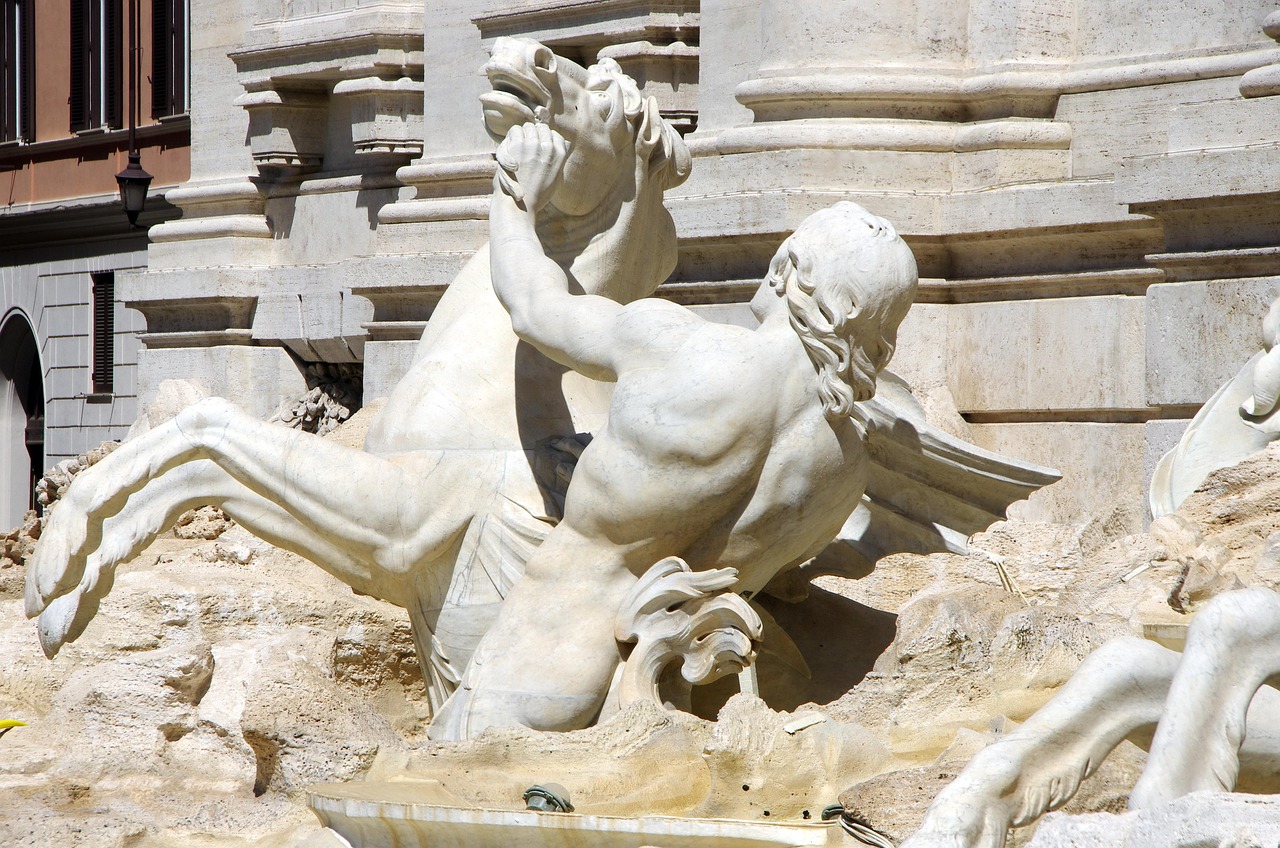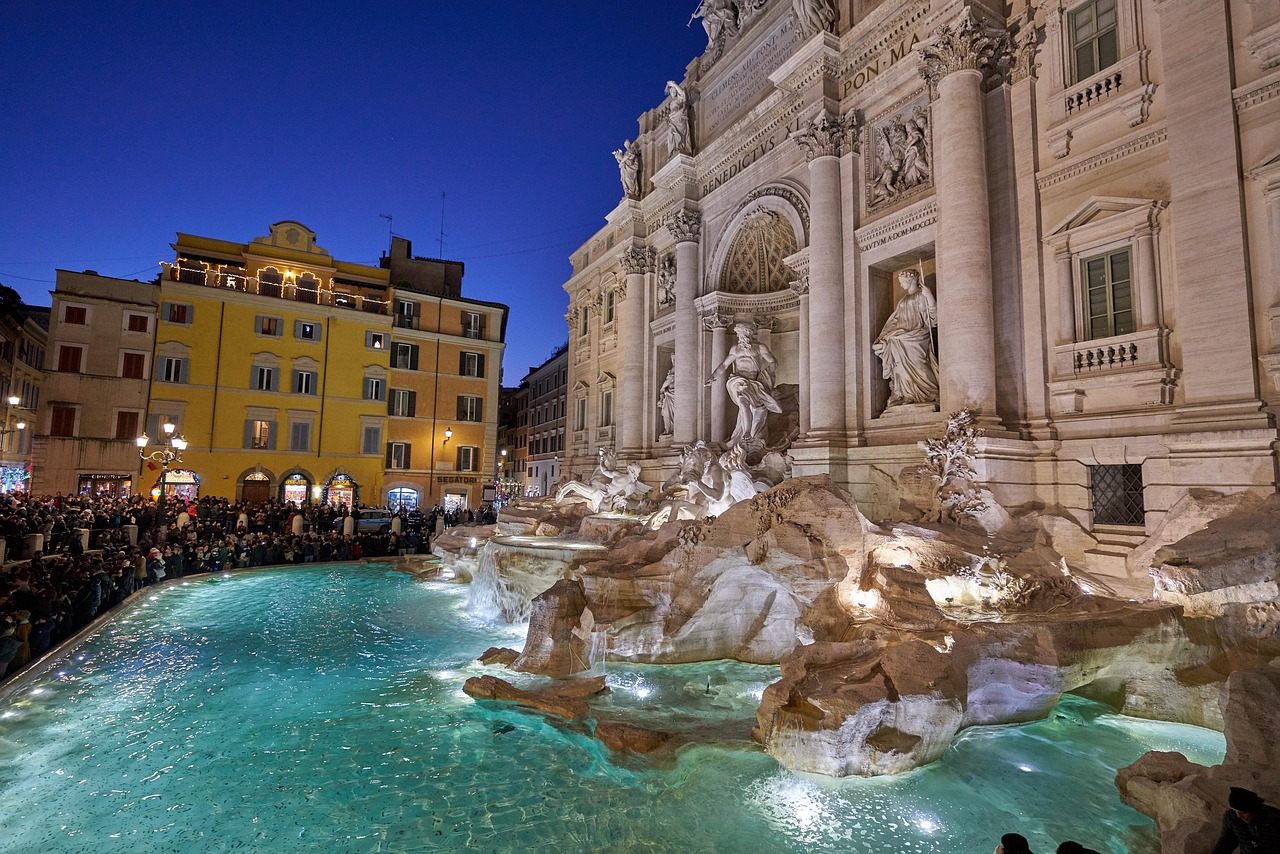About Trevi Fountain
The Trevi Fountain’s waters flow from the ancient Aqua Virgo Aqueduct, built by Agrippa to supply Emperor Augustus’s baths, ending at the meeting point of three roads—giving the fountain its name, “Trevi,” meaning “three roads.”
The Story Behind the Fountain’s Architect
In 1730, Florentine Alessandro Galilei won the Trevi Fountain design contest, but Romans wanted their local Nicola Salvi. Salvi took over but died before completion. Giuseppe Pannini finished the fountain, creating one of Rome’s most famous landmarks.
Design and Features
The fountain stands 26m tall and 50m wide, featuring Oceanus, Tritons, and seahorses representing the sea’s moods—from calm to stormy. It uses 80,000 cubic meters of recycled water daily to keep the water fresh and flowing.
The Curious “Ace of Cups" Sculpture
During construction, a local barber complained about the noise and mess. To tease him, Salvi placed the “Ace of Cups” sculpture to block the barber’s view of the fountain, ensuring he’d would never see its full beauty.
Three Coins, Three Wishes
Legend says tossing a coin into the Trevi Fountain ensures a return to Rome, a second brings love, and a third promises marriage. Every night, the coins are collected and donated to Caritas, an Italian charity helping those in need.
- Only coins thrown with your right hand over your left shoulder count!
- The fountain has appeared in famous films, including La Dolce Vita, Three Coins in the Fountain, and The Lizzie McGuire Movie.
- It’s illegal to take coins from the Trevi Fountain—one thief, nicknamed “d’Artagnan,” stole them for 34 years beforeb eing caught in 2002!






